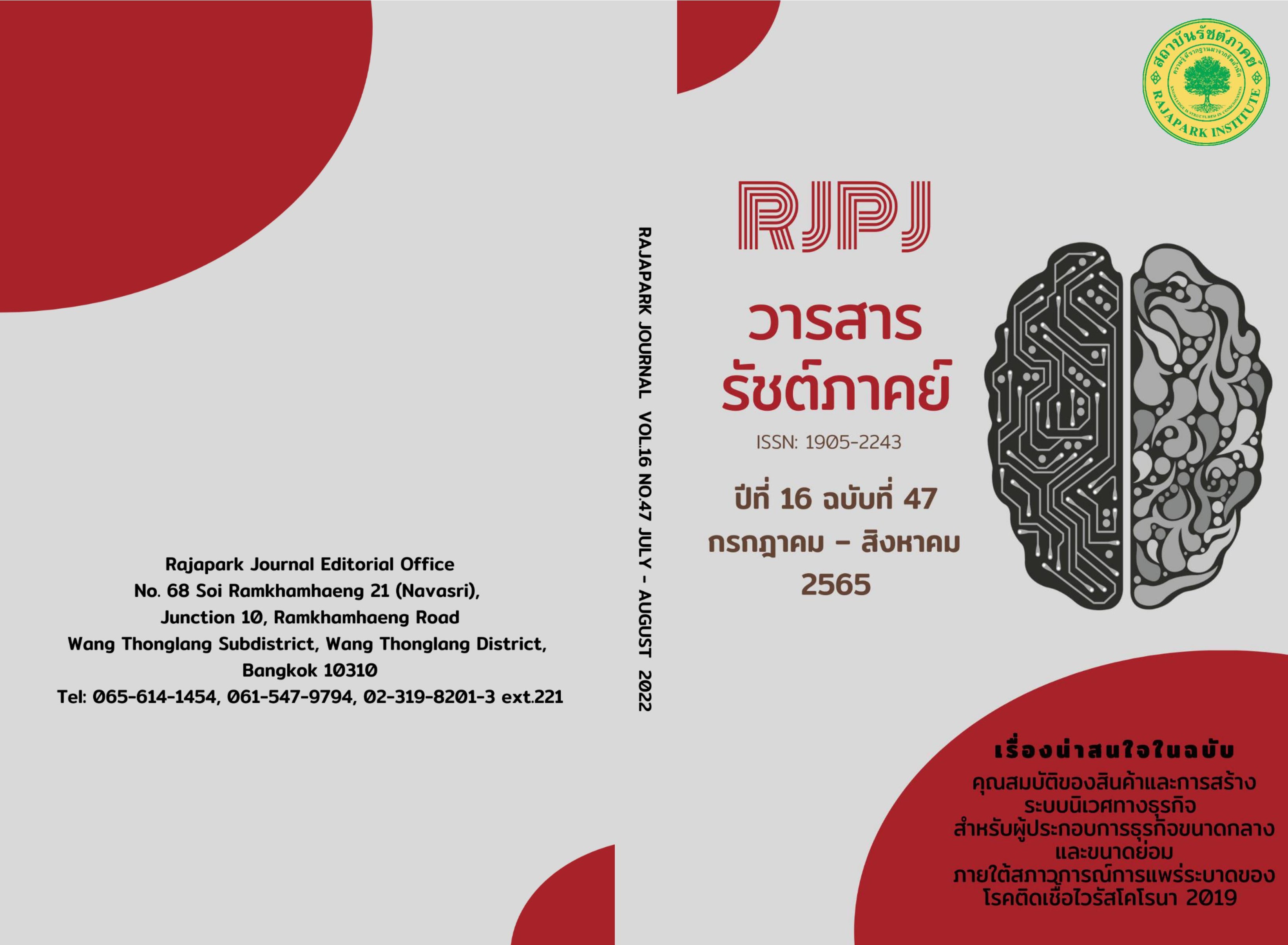A Study of the Adaptation Guidelines of Tourism Entrepreneurs and Services in Phuket Towards the Employment of ASEAN Professional Workers Tourism and Services in Phuket
Main Article Content
Abstract
This research aimed to be a study of the adaptation guidelines of tourism entrepreneurs and services in Phuket towards the employment of ASEAN professional workers in tourism and services in Phuket. The research was conducted using mixed methods and the instruments were as follows: 1) a questionnaire for a sampling of 118 class-3 and class-4 hotels in Phuket. 2) an in-depth interview for the representatives of private sectors who work with migrant workers in Phuket 3) a small-group discussion among the representatives from the private sectors involved in the employment of foreign workers in the hotel business. Statistical analysis included frequency, percentage, mean, and descriptive analysis. The results of the research were: 1) In the aspect of the need for ASEAN tourism and hospitality professionals in Phuket, all of the hotel establishments in Phuket have a need for ASEAN workers regardless of their gender and education. The results also showed that ASEAN workers aged 26–40 years were perceived as the most preferred by 85 percent of the hotel establishments, while 80.5% of the hotel establishments perceived ASEAN workers’ previous work experience in Thailand as the most required qualification. 2) In terms of the nationality of ASEAN workers, there was the highest demand for workers from the Philippines. The departments most in need of migrant workers were food and beverage services. 3) Surveyed as of March 2019, 11 Thai workers per 1 ASEAN worker were employed. The findings also showed that ASEAN worker employment has an impact at the medium level, with a mean score of 2.94 in four aspects: career and position of Thai workers in the future, local utilization of public property, and more accessible social welfare. The implementation of the study is to have immigrant employment incorporated into the hotels’ 1-2 year plan in regard to full-time employees and student interns.
Article Details

This work is licensed under a Creative Commons Attribution-NonCommercial-NoDerivatives 4.0 International License.
Views and opinions appearing in the Journal it is the responsibility of the author of the article, and does not constitute the view and responsibility of the editorial team.
References
Chalamwong, Y. (2014). Thai Workers in a New Context when Opening the ASEAN Community. https://tdri.or.th/2014/10/thai-labour-in-aec-context/.
Chanthapong, S., & Agmapisarn, C. (2022). Impact and Resilience of Hotel and Restaurant Business Operators During COVID-19 Analysis from the Outside-In principle. https://www.bot.or.th/Thai/ResearchAndPublications/articles/Pages/Article_26Oct2021.aspx.
Chula Unisearch, Chulalongkorn University. (2012). Preparation for Flow of Labor in the ASEAN Community, Final report. http://nlrc.mol.go.th/research/NGDK0N4/00NGDK0N4.pdf
Foreign Workers Administration Office. (2017). Statistic 2017. https://www.doe.go.th/prd/alien/statistic/param/site/152/cat/82/sub/0/pull/category/view/list-label
Krejcie, R. V., & Morgan, D. W. (1970). Determining sample size for research activities. Educational and Psychological Measurement, 30(3), 607–610.
Kunnu, W., & Pasunon, P. (2015). The affecting of migrant labour in Surat Thani Municipality, Thailand. Journal of Humanities and Social Sciences, Thaksin University, 10(1), 75-94.
Likert, R. (1932). A technique for measurement of attitudes. Archives of Psychology, 140, 5-55.
Ministry of Tourism and Sports. (2012). ASEAN Mutual Recognition Arrangement on Tourism Professional. https://www.parliament.go.th/ewtadmin/ewt/elaw_parcy/ewt_dl_link.php?nid=2426
Thailand Development Research Institute (TDRI). (2011). A Study of an Effective Demand for and Management of Alien Workers in Agriculture, Fisheries and Related Sectors and Construction Sectors. https://tdri.or.th/2012/09/a-study-of-an-effective-demand-for-and-management-of-alien-workers-in-agriculture-fisheries-and-related-sectors-and-constructionsectors/.


